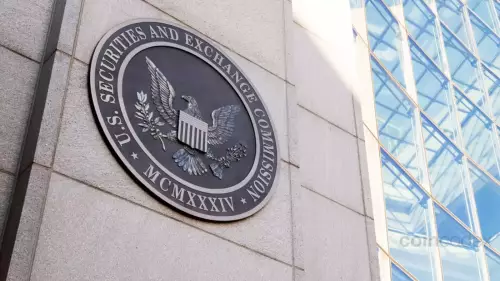 |
|
 |
|
 |
|
 |
|
 |
|
 |
|
 |
|
 |
|
 |
|
 |
|
 |
|
 |
|
 |
|
 |
|
 |
|
Cryptocurrency News Articles
Bitcoin Price Plunge: Decoding the Drop and What's Next
Sep 28, 2025 at 10:48 pm
Bitcoin's price recently took a tumble. Let's break down the reasons behind the drop, from ETF outflows to government shutdown fears, and see what the future holds.

Bitcoin's been on a bit of a rollercoaster lately, hasn't it? After flirting with the $120,000 mark earlier this year, it's taken a dip, leaving investors wondering what's up. The recent price drop below $110,000 has folks asking 'Bitcoin price, price drop, reasons?' Let's dive in and decode what's driving this volatility.
ETF Exodus: Are Institutions Losing Interest?
One major factor is the outflow from Bitcoin ETFs. We're talking about nearly a billion dollars exiting these funds in just a few days! That's a stark contrast to the massive inflows we saw earlier in the year when Bitcoin was soaring. This suggests institutional investors might be pulling back, which naturally puts downward pressure on the price. Think of it like this: if everyone's leaving the party, the music tends to stop.
Miner's Dilemma: Selling vs. Holding
Another piece of the puzzle is what Bitcoin miners are doing. On-chain data shows a decline in miner accumulation. In plain English, that means they're selling more Bitcoin than they're holding. Why? Well, they might be covering operational costs or simply taking profits. But when miners start selling, it increases the supply of Bitcoin on the market, which can push the price down.
Options Expiry and Market Volatility
The expiration of nearly $23 billion in Bitcoin and Ethereum options contracts added fuel to the fire. Large investors often try to push prices toward a "max pain" level, which can trigger sudden drops and panic among smaller traders. It's like a game of high-stakes poker where the big players can influence the outcome.
Economic Headwinds: Government Shutdown Fears and Strong GDP
Macroeconomic factors are also playing a role. Fears of a U.S. government shutdown, with a significant probability looming, are making investors nervous. Historically, shutdowns have led to sell-offs in risky assets like crypto. Ironically, strong economic data, like the better-than-expected GDP growth, can also be bearish for crypto in the short term. It reduces the likelihood of interest rate cuts, which some investors were hoping would boost the market.
Technical Analysis: Double Top and Potential Reversal
From a technical analysis perspective, Bitcoin's daily chart showed a double top formation around the $111,000 to $112,000 range, signaling a potential downside target at $100,780. The Relative Strength Index (RSI) has also been hovering near oversold territory, indicating a decline in buying pressure. If Bitcoin can't reclaim $110,000, we could see it test the $100,000 support level.
The Michael Saylor Factor: Still Bullish?
Despite the recent volatility, MicroStrategy CEO Michael Saylor is still a Bitcoin bull. He's urging his followers to buy more, even as MicroStrategy's Bitcoin holdings have taken a hit in value. Whether his renewed buy calls will incentivize significant action from other US-based corporate actors to stabilize price action remains to be seen.
Ether ETFs: A Similar Story
It's not just Bitcoin feeling the heat. Ether ETFs have also seen significant outflows, totaling nearly $800 million in a week. This coincides with a price drop of over 10% for Ether and weakening retail participation. However, there's still anticipation about the potential approval of staking within spot Ethereum ETFs, which could be a game-changer.
So, What's Next?
The crypto market is known for its volatility, and the recent price drop is a reminder of that. Factors like ETF outflows, miner selling, options expiry, and macroeconomic headwinds are all contributing to the current uncertainty. Keep an eye on those key support and resistance levels, and don't let the FUD (fear, uncertainty, and doubt) get to you. Remember, even the wildest rollercoasters eventually come to a stop. HODL on, folks!
Disclaimer:info@kdj.com
The information provided is not trading advice. kdj.com does not assume any responsibility for any investments made based on the information provided in this article. Cryptocurrencies are highly volatile and it is highly recommended that you invest with caution after thorough research!
If you believe that the content used on this website infringes your copyright, please contact us immediately (info@kdj.com) and we will delete it promptly.






























































